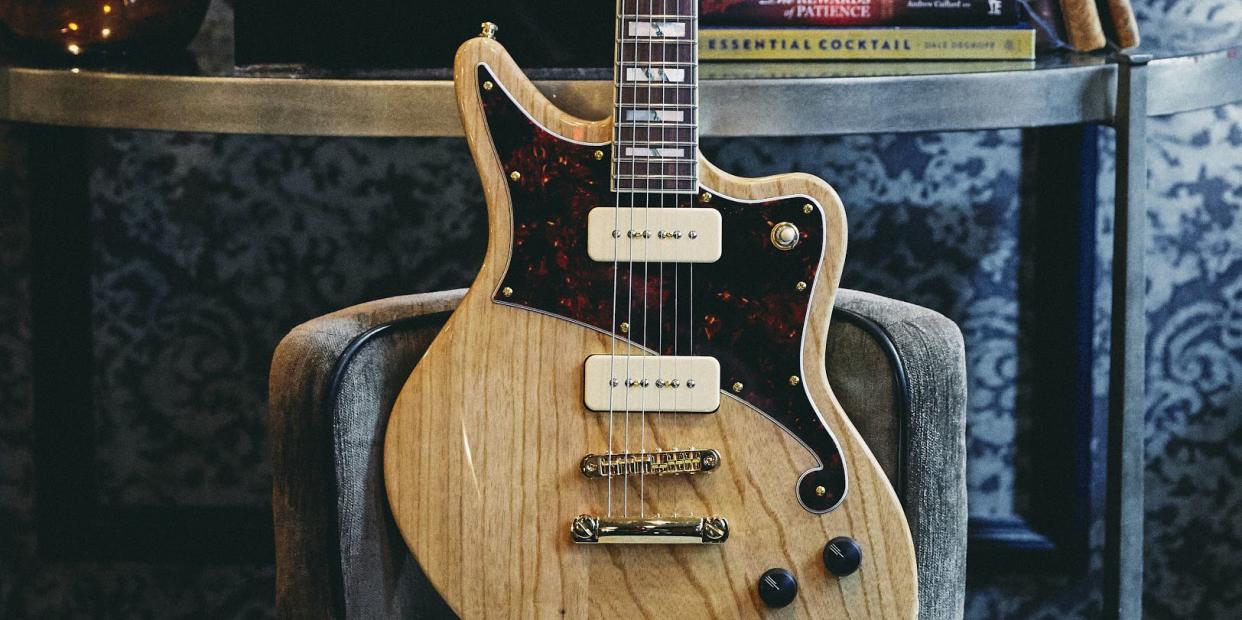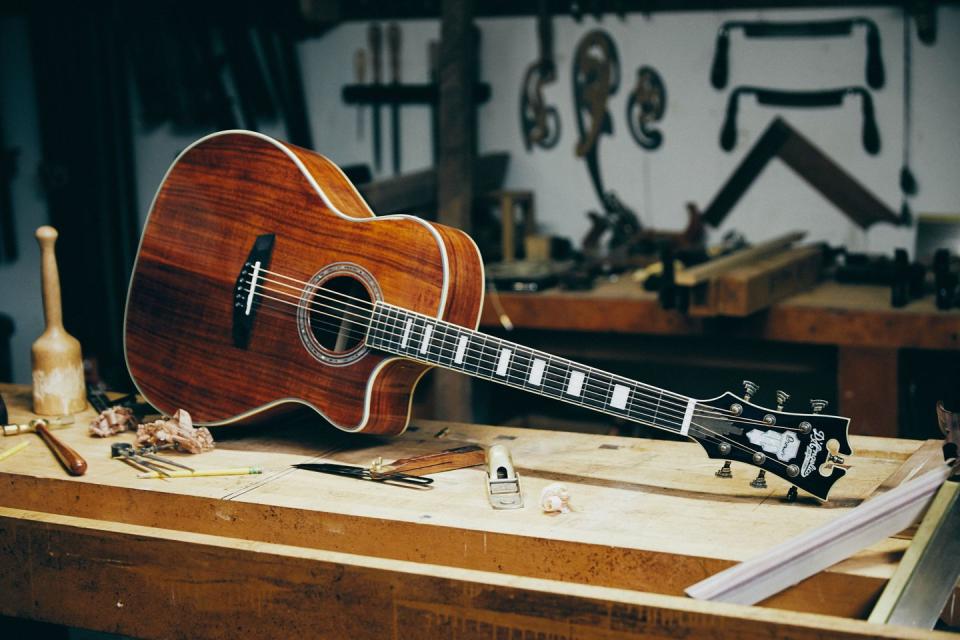The Reports of the Guitar's Death Have Been Grossly Exaggerated. This Brand Is Proof.

There’s been a lot of hand-wringing about the state of the guitar over the last couple of years. On one side, the doomsayers. It’s dead! Time for the funeral, pack it in, show’s over, folks. They point to the decline in guitar-driven music in favor of pop's current obsession with electronic, synthesized sounds. Or to Gibson’s bankruptcy this year (though considering Fender’s recent rebound, it seems that might be company-specific). Or to the oft-cited figure about electric guitar sales dropping from 1.5 million to 1 million annually in the last decade. On the other side, there are the folks who believe the six-string is doing just fine.

“Guitar is so tremendously tied to American culture that it’s not going to go anywhere. It’s too much a part of the way we make music and write songs,” says Ryan Kershaw, director of product development and artist relations for New York-based guitar brand D’Angelico. He is, clearly, part of the latter camp of guitar prognosticators.
Kershaw joined the team at D’Angelico four years ago, which puts the beginning of his tenure at the company right around the midpoint of its recent resurgence. The brand relaunched from a state of extended hibernation back in 2011, but the roots go back much further-all the way to Manhattan’s Kenmare Street in 1932, where luthier John D’Angelico crafted unrivaled archtop guitars for jazz musicians. “He built for the who’s who of the day,” says Kershaw. “He built for Bucky Pizzarelli, and Tony Mottola, who was Frank Sinatra’s guitar player. Chet Atkins famously played a D’Angelico.”

But despite his revered status, D’Anglico was “a one-man show.” He made only a few dozen instruments per year, and trained a single apprentice named Jimmy D’Aquisto. When the legendary luthier passed away in 1964, D’Aquisto kept things running for a few years. But when the he struck out on his own, the D’Angelico brand fell dormant. Well, for a while at least.
After decades on the shelf, D’Angelico has come into a new life, with new ownership. And for those fretting about the future of, well, fretted instruments, its story should ease some worries. The brand first hit the market with only four models based on archival designs from D’Angelico himself. “It was just doing faithful reissues of trusted designs,” Kershaw explains. But despite the small scope, it immediately took off. The next step? Going bigger. “While [those initial designs] did allow us to grow, we started introducing more versatile instruments. We’d do stuff a little more geared towards rock or country or whatever it may be.”

One of those new introductions: flattop acoustic guitars, which launched in 2015 and have grown to nearly half of the company’s business. And which, crucially, aren’t exactly uncommon in country and Americana music. Because despite that earlier number about dipping electric guitar sales, the sales of guitars in total have actually risen-to the tune of 300,000 more per year than in 2009. Shredding guitar heroes may be fewer and further between these days, but there’s no doubt some artists (and Taylor Swift can't go without mention here) have inspired at least a few younger fingers to learn their first G, C, and A chords.
“It’s easy for certain people to say that the guitar is starting to leave pop culture, because we’re not in the era of full guitar heroes anymore,” says Kershaw. “But what a lot of people don’t know, because it’s not screaming in their face the way that Slash was or the way that Clapton was, is that guitar is involved in almost every single track we hear on the radio still. It’s in every single recording studio, every young person has one if they’re looking to play music. It’s still very, very ubiquitous.”

Plus, it’s not like the guitar heroes have disappeared entirely. D’Angelico works with everyone from Isaiah Sharkey, John Mayer’s touring guitarist, to The Kooks’ Luke Pritchard and, famously, Bob Weir of The Grateful Dead and Dead & Company. “I think originally what attracted Bob was that we were young again, and he could have a big impact on us. We could work together to grow something from the ground up,” says Kershaw. And Weir’s guitar did indeed have an impact-it’s the most popular signature model the brand has produced.
D’Angelico is privately held and declines to share sales figures, so the actual numbers are a guessing game for anyone outside the company. But Kershaw notes that the brand has “grown significantly” since its relaunch. “We’re showing no signs of slowing down in what has been called a struggling industry,” he says. “We’re pretty happy with seeming like an exception to the rule.”
Part of that success, Kershaw says, is a combination of new products-in addition to acoustics, the brand launched solid-body electric guitars in 2018-and straight-up good looks. “We inherited a lot of aesthetic elements that we could fold into a brand, and have a way more nutritious starting point than another brand might,” he explains. “We have the pleasure of being based in New York City, and John D’Angelico, the original luthier, brought in a ton of elements from around him. There’s a lot of art deco elements in our guitars.” Kershaw notes that D'Angelico's signature headstock is, in and of itself, an icon, one that persists on models both old and new. “There are traditional designs from the Jazz Age that we can still pull in and incorporate into a modern design.”
But beyond that, there’s something truly enduring about a guitar over, say, a mini keyboard plugged into a laptop. “It’s a beautiful thing,” Kershaw says. “And regardless of whether you have the nicest possible one that’s made, or something that’s purely functional, it represents something. It represents an ability to create. And people get genuinely excited when they’re around. Of course there’s always going to be those campfires where somebody annoys you, but I’d like to think there are more campfires where you’re excited to see a guitar show up.”
('You Might Also Like',)


